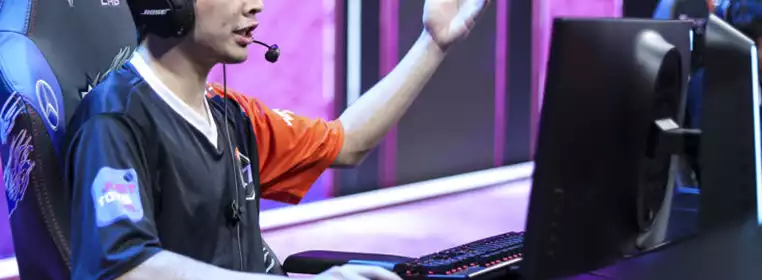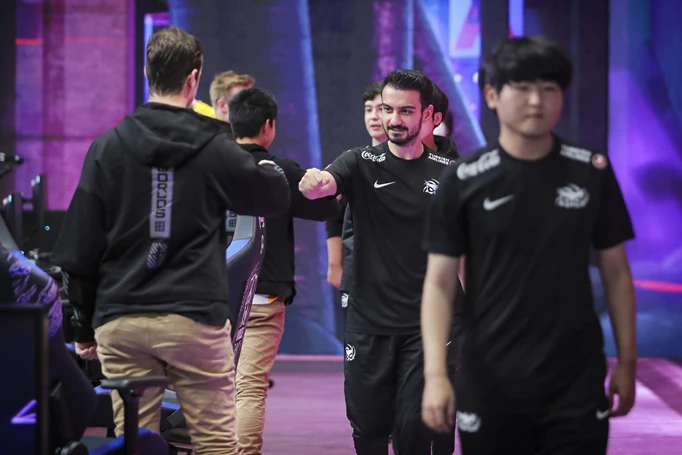Was Worlds 2020 The Most Competitive Play-Ins To Date?

Emerging regions have taken Worlds 2020 play-ins by storm. Both Groups A and B appeared to be mostly decided before the tournament began. Group A would either have Team Liquid or MAD Lions secure the top spot to automatically qualify for the next stage, while the other would crush the bracket stage. LGD Gaming was predicted to top Group B with the four smaller regional teams fighting for the last spot.
But at the end of the round-robin stage, leagues perceived as less skilful and behind in terms of infrastructure filled out the top of both groups. Legacy Esports and Papara SuperMassive looked miles ahead of MAD Lions in both games, and PSG Talon earned an automatic spot to the group stage almost without breaking a sweat. This level of parity across the smaller regions and the big four has not been seen before, and it is mostly thanks to those smaller leagues and regions stepping up and growing to this level.
Check out GGRecon's coverage of the League Of Legends Worlds Play-Ins, including results, recaps, and rewatch recommendations.
The History of Small Regions at Worlds
The history of a wild card, or emerging, regions at Worlds is a relatively sad tale. Smaller regions were invited to the tournament in Season three after a five-team qualifier with the Lithuanian representative, GamingGear.eu, only eeking out one win in the group stage. Since then, the format for how these regions and leagues qualified changed every few seasons culminating in the current system we have today.
The only team from an emerging region to make it out of the group stage was the Russian team Nox Luna which was swept in the Quarter Finals. This has been the highlight of smaller regions so far as most teams either do not make it past the qualification, or play-in, stage or flame out in the group stage.
Some of these results are due to the format and its constant change over the course of the decade. In the beginning, smaller regions would play in a qualification tournament and then go directly into the group stage, thrown into the fire after showing a lot of their strategies and picks to the bigger teams. Then there were multiple qualifier tournaments and even MSI qualifiers, leading into our current system where smaller regions face not only each other, but lower seeded teams from more prominent regions.
This current system has seemed to breed some level of parity and nuance to Worlds qualifications. The addition of lower-seeded teams from bigger regions has also forced these leagues and teams to become more prepared going into qualifications by facing not only talent from the TCL, OPL, and CIS, but also potentially the LEC, LPL, and LCK.

 Click to enlarge
Click to enlargeLevel of Play in Emerging Regions
Many downplay the skill level in emerging, or wildcard, regions as the level of talent in their respective solo queue server and leagues are lower than the bigger regions. The regions are called emerging and small for a reason, their servers are relatively new compared to others, and the population is much smaller.
But thanks to the rise of imports in these regions, the level of play has increased over the years. The imports that come into these regions improve the solo queue and provide an added skill check to players who want to play at the highest level in their server. Players who choose to leave and try to compete in bigger leagues, like the LCS or LPL, either return better than before or stay to showcase the growth of domestic talent in those regions.
Players in these regions and locations also have access to the bigger servers, just with slightly higher latency. In Japan, most players that compete in the LJL have accounts in the Korean server, and most European players that compete in Turkey or Russia can play on the Western European server.
Infrastructure and Coaching
Adding some sort of infrastructure and payment to players is another way that these regions have levelled up their play. In some of the smaller regions, where esports are less established and popular, there used to be problems with players not getting paid or teams without coaches or managers to help with basic team needs. This was an issue in the early days of the LCS, EU LCS, and even the LPL, but instances of players competing without pay in some of these smaller regions were fairly common a few years ago.
This also led to super teams because the teams with this level of infrastructure and staff would run over the competition in their league. These teams would then come into the tournament without any losses and would face their first challenging opponent on the World stage.
But, thanks to legitimate organisations entering the space, and with coaches and managers becoming more common as the years went on, emerging regions have found a stability that allows their players to improve and compete worry-free.
Smaller regions had humble beginnings at Worlds and have grown significantly since going 1-7 after winning a game against a trolling TSM. They have become a breeding ground for undiscovered talent for the LEC and LCS and are even stable scrim partners with teams in the LCS and LCK. The narrative for these regions has been irreversibly changed at this year's Worlds. Teams from Turkey, Japan, Oceania, Brazil, Russia, SouthEast Asia, and Latin America are no longer cannon fodder for bigger leagues on the World stage; they are contenders.
Images via lolesports
